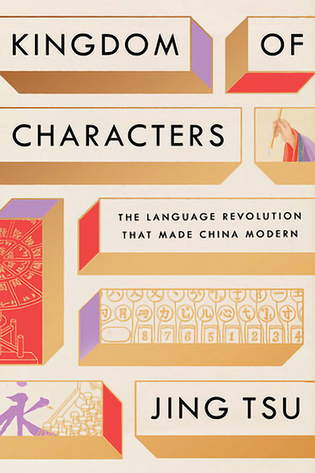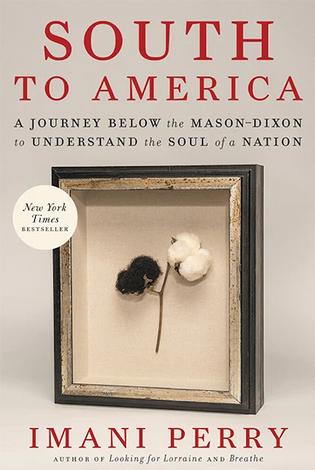
Kingdom of Characters: The Language Revolution That Made China Modern
Jing Tsu, John M. Schiff professor of east asian languages and literatures
Riverhead Books, $28
Reviewed by Barbara Demick ’79
When she first immigrated to the United States as a nine-year-old and had to learn her ABCs, Jing Tsu found the alphabet dull and childish compared with the intricate Chinese characters she’d tried to master in Taiwan. Now a Yale professor, Tsu came to appreciate that her predicament was shared by an entire civilization forced to adapt to a modern world governed by the Latin alphabet. Those innocuous ABCs were in fact a tyranny imposed by the West.
In Kingdom of Characters, Tsu shows in equal measure her reverence for Chinese characters and her exasperation with their impracticality. By the early twentieth century, many Chinese intellectuals blamed the complexity of the Chinese script for their nation’s woeful backwardness. Literacy was confined to a small elite who didn’t have to labor for a living. There was no equivalent of alphabetical order to classify the 9,000-plus characters. It was an ordeal to create a card catalogue or set up a filing system.
In the hands of a less skillful writer, this could be dull material, but Tsu populates her book with a cast of colorful modernizers. In the late Qing dynasty, there was the Confucian scholar who disguised himself in filthy monk’s clothing to develop one of the first phonetic alphabets for writing Mandarin Chinese—in defiance of the Empress Dowager Cixi’s edicts against modernization. There was a Chinese engineering student at MIT who in 1916 designed a 40-pound typewriter that could produce 4,000 Chinese characters. An imprisoned electrical engineer drafted a system to code characters by writing on the lid of his teacup, since he lacked paper. Christian missionaries hoping to spread the good word were among the most zealous, but it was the Communists who got the job done. Shortly after taking power in 1949, Mao Zedong ordered the simplification of characters, boosting literacy among the masses and, of course, propagating the Communist credo.
And not to forget Silicon Valley: Chinese characters are ideally suited for the smartphone, because they pack so much information into a small screen. Tap in ni hao and it will pop up as, “Hello.” “The Chinese script,” Tsu writes, “has completely turned around its position in relation to the Western alphabetic script.”
Barbara Demick ’80 is an author of numerous books.
__________________________________________________________________

South to America: A Journey Below the Mason-Dixon to Understand the Soul of a Nation
By Imani Perry ’94
HarperCollins Publishers, $28.99
Reviewed by Matthew Countryman ’85
Imani Perry ’94 is a historian, biographer, legal theorist, cultural and literary critic, storyteller, and author of seven books. In South to America, Perry, a professor of African American studies at Princeton who trained at Yale and Harvard, tells stories of the South, its history, culture, and politics. Part history, part travelogue, part memoir, South to America is rooted in the premise that the South, far from being a distant and unique place, is key to understanding the nation and the most divisive and controversial elements of our contemporary politics and culture. South to America is thus an exploration of what it would mean to put Southern places and lives, Southern cultures and ways of remembering the past, at the center of what it means to be American. At the same time, it is a love letter to the region of Perry’s birth, a region she moved away from as a child and to which she has returned only for visits.
Perry recounts the history of Southern places through a mix of storytelling, observation, personal reflection, and explorations of big questions. Early on, she asks, but never resolves, whether there is a significant difference between monuments to the Confederate heroes (most of them slavers) who committed treason against the Union and monuments to the nation’s founders (many of them slavers) who committed treason against the British monarchy. If the reader is disappointed by her evasion of clear-cut answers to this and other historical conundrums, then they have missed her pedagogical point. There are no right answers, only difficult questions, when considering the history of a nation built on democratic principles and also on racism, greed, conquest, and yes, even genocide.
Perry sets out neither to celebrate nor indict. She is unfailingly honest about both the nation’s and the South’s limitations and sins, but also eager to show that one cannot fully disentangle the good from the bad in our culture and politics. This is most evident in her exploration of the intricacies of Southern culture. While she repeats the truism that Sunday mornings remain the most segregated time of the week, she also shows that Southern church culture provides a common ground for Black and white southerners that simply does not exist elsewhere in the country.
“There is simultaneously,” Perry concludes, “a jealously guarded color line and an ease between Black and White in the South.”
Race is at the center of Perry’s narrative and explorations. Central to the othering of the South is the desire to view race and racism as regional problems—Southern-specific distortions of the national creed—rather than constitutive of a nation seemingly incapable of extending its democratic ethos to the descendants of the indigenous peoples it displaced and the Black people it enslaved. The country’s racial divide, Perry is telling her readers, cannot be healed unless and until we are prepared to see the South as at the center, rather than at the margins, of the nation’s history, politics, and culture.
On this point, Perry has a clear audience in mind: those of us in the North who view the South as the fount of racism. “The White Northerner,” she writes, “seeks to express solidarity with the Black Southerner by turning the White Southerner into a caricatured demon in comparison to his own virtue.” Of course, this is a caricature of white northerners, but it also expresses a bitter truth of Black life, that the view of racism as primarily a Southern phenomenon has been and continues to be used to disappear all manner of racial discrimination and inequality in the rest of the country. “This is what Black folks mean when we say we prefer the Southern White person’s honest racism to the Northern liberal’s subterfuge,” Perry concludes. “It is not physically more benign, or more dependable. But it is transparent in the way it terrorizes.”
Matthew Countryman ’85 is chair of the Afroamerican and African studies department at the University of Michigan.
 loading
loading
